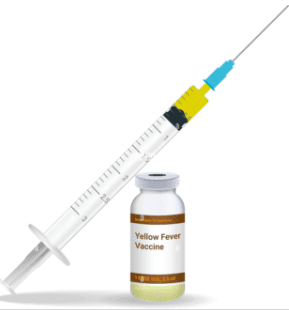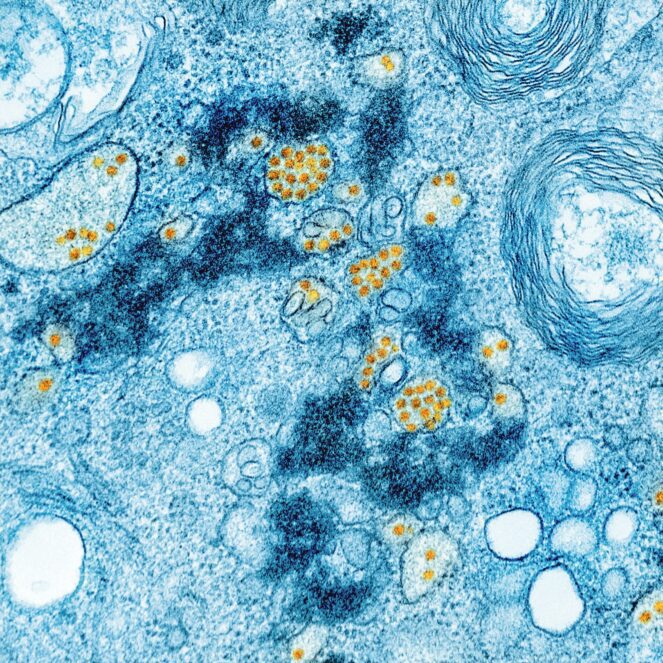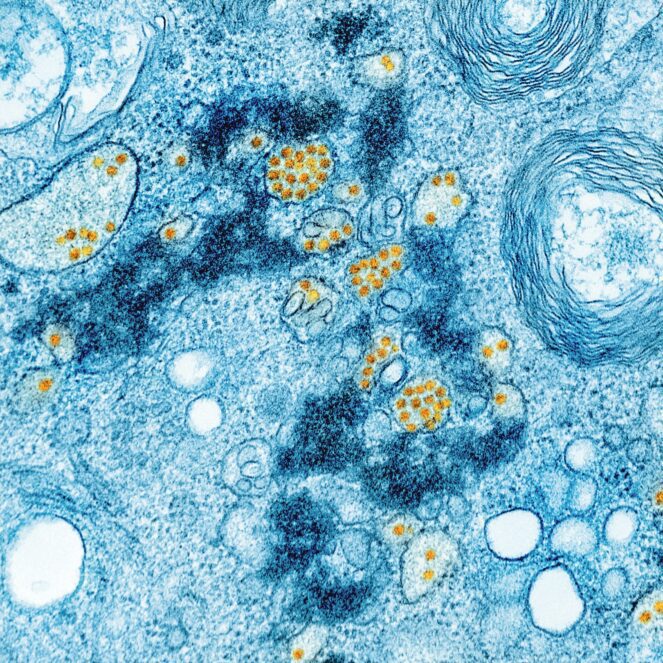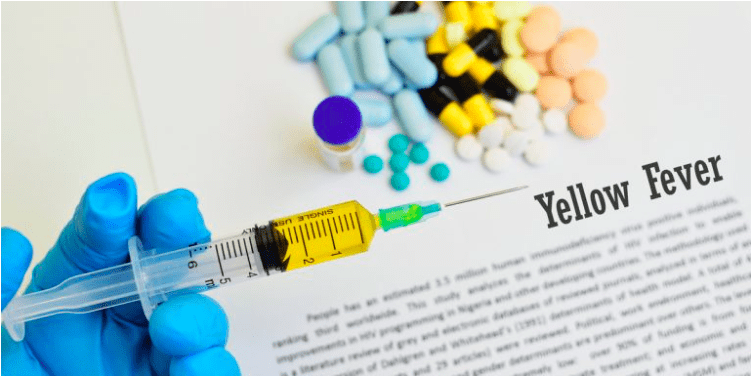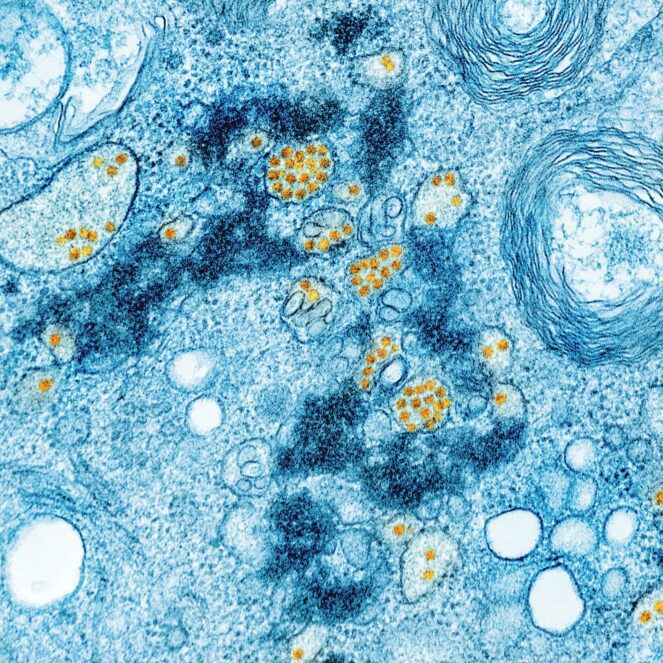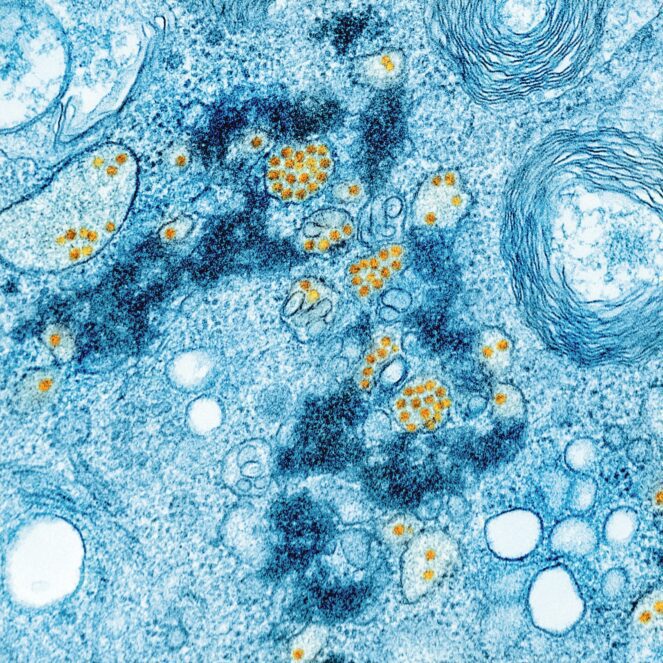Health
What Is The Treatment Of Yellow Fever?

Last Updated on May 28, 2022 by Nurse Vicky
What Is The Treatment Of Yellow Fever?
Most cases of yellow fever are subclinical or mild. Only about 15% of affected individuals will develop severe disease.
Although full recovery may take weeks or months, it is possible to die in thirty to fifty percent of severe cases.
Yellow fever is most dangerous to unvaccinated travelers who have not received a yellow fever vaccine, although natives have acquired immunity.
Here’s how to recognize the symptoms and learn about treatment options.
Symptoms.
Though most cases of yellow fever are mild or subclinical, only about 15% of patients develop the more serious symptoms of the disease.
Although full recovery can take weeks or months, if the disease is severe, up to 50 percent of patients will die.
This disease is most often acquired by non-natives, who are at risk for contracting it if they travel to an area where vaccination is not mandatory.
To prevent the infection, follow these precautions:
Those without the yellow fever vaccine should visit a doctor if they experience any of the symptoms above.
Also, let your doctor know if you’ve recently traveled to a place where yellow fever is common.
The doctor may order a blood test to confirm whether the illness is yellow fever or not. The doctor will analyze the sample for antibodies and yellow fever virus.
Treatment will depend on the results of the test.
Patients suffering from this disease should follow the doctor’s advice regarding the duration of their illness and how long they have been sick
Diagnosis.
Diagnosis and treatment of yellow fever begin with a proper medical evaluation.
The illness is often hard to diagnose in its early stages, as it is sometimes confused with other diseases.
symptoms may be similar to leptospirosis, malaria, viral hepatitis, or any other type of hemorrhagic fever.
However, polymerase chain reaction testing is an accurate way to detect yellow fever, and antibody tests are necessary if the disease has progressed.
Patients suffering from yellow fever should seek medical care immediately. The first phase of the illness involves mild, non-specific symptoms.
The second phase is marked by severe symptoms and may last three to six days.
Severe cases should be managed in an intensive care unit (ICU) for monitoring of DIC and hemorrhagic disease.
In the case of severe cases, the patient may require dialysis or a kidney transplant. Yellow fever can be transmitted from one person to another, so isolation is essential.
Prevention.
Whether you are traveling to a country with an endemic yellow fever epidemic, or you’re simply trying to prevent it, you’ll want to avoid mosquito bites.
While there is no specific cure for yellow fever, medical treatment can help you recover. Treatment may involve hospitalization.
In some cases, anti-inflammatory drugs may be prescribed to thin the blood. If organ damage is suspected, patients may be treated with blood-thinning medicines.
The most important part of yellow fever prevention is preventing infection. Vaccinations against yellow fever are required by law in many countries.
Those traveling to infected regions should make sure to get the shots.
Once the disease has been diagnosed, those with the disease are often isolated in rooms that are screened and sprayed with insecticides.
This helps control the disease in these areas. If you suspect that you have been exposed to yellow fever, it is advisable to seek medical treatment as soon as possible.
Vaccination.
While the vast majority of people who contract yellow fever do not experience any symptoms, about 30 to 60 percent of them do.
People with thymus disorders or weakened immune systems are especially at risk for developing severe symptoms.
In such cases, it is important to discuss vaccination with a doctor. The vaccination also can have side effects, including inflammation of the brain or organ failure.
Vaccination is the treatment of yellow fever, but it should not be used without proper medical advice.
In order to prevent yellow fever outbreaks, prompt detection and rapid response to emergency vaccination campaigns are crucial.
In fact, the true incidence of the disease is estimated at ten to 250 times greater than reported.
That’s why WHO recommends that every at-risk country have at least one national laboratory equipped with basic yellow fever blood tests.
Yellow fever cases that are confirmed in an unvaccinated population constitute an outbreak, and investigation teams must act quickly to control the disease.
Jaundice.
The treatment of yellow fever with jaundice begins immediately after a person develops the symptoms.
It is difficult to diagnose the disease early because jaundice is very common among middle-aged men and women.
Other people at higher risk for jaundice include people with hepatitis and those who drink alcohol excessively.
Symptoms of jaundice are often misinterpreted as signs of malaria or another hemorrhagic fever.
The virus responsible for yellow fever infects humans by mosquito bites.
This disease can be mild or severe, and the symptoms are usually accompanied by a high fever, muscle pain, fatigue, and headache.
A few percent of cases result in death, but most people recover from the disease within a week or two.
Although endemic in the tropics of South and Central America, yellow fever rarely affects people in the United States.
Treatment.
Most people who have contracted yellow fever won’t develop symptoms, but others can suffer from high fever and chills for three to four days.
Most people recover within two days, but in some cases, the illness can be severe.
Patients with moderate to severe cases can experience high fever and a slow pulse, as well as petechia or jaundice.
Severe yellow fever may result in organ failure, or even death. The World Health Organization estimates that up to 50% of sufferers will die. However, there are treatments for yellow fever.
The first thing you should do if you have been exposed to the virus is to take action against it. Yellow fever is a serious illness that can damage the heart, kidneys, and gastrointestinal tract.
It causes sudden onset of fever and a yellow tint to the skin. Severe yellow fever can also lead to hemorrhage and even multiple organ failure.
Yellow fever occurs in tropical regions, especially in sub-Saharan Africa and South America. Vaccination is the best defense against this illness.
Its prevalence is low, and most people develop immunity in one to two weeks.
Conclusion
Tell us anything you know about ”What Is The Treatment Of Yellow Fever?”
Remember your health is wealth!
Please let us know your thoughts in the comments section.
Health
7 Fascinating Facts About Magnesium You Probably Didn’t Know

7 Fascinating Facts About Magnesium You Probably Didn’t Know
Magnesium is one of the most essential minerals for our health, yet many people are unaware of its significance.
This vital nutrient plays a crucial role in numerous bodily functions, from energy production to maintaining a healthy heart.
In this article, we will delve into seven intriguing facts about magnesium that may surprise you and help you appreciate its importance in your daily life.
What is Magnesium?
Magnesium is a naturally occurring mineral found in various foods and is vital for human health.
It is the fourth most abundant mineral in the body and is involved in over 300 biochemical reactions.
Magnesium contributes to nerve function, muscle contraction, blood sugar control, and blood pressure regulation.
It can be obtained from various dietary sources, including leafy greens, nuts, seeds, whole grains, and legumes.
1. Magnesium is Involved in Energy Production
Did you know that magnesium is essential for converting food into energy? This mineral plays a critical role in the activation of ATP (adenosine triphosphate), the energy currency of our cells.
Without sufficient magnesium, your body struggles to produce energy effectively, which can lead to feelings of fatigue and weakness.
How Does It Work?
ATP production occurs in the mitochondria, often referred to as the powerhouse of the cell.
Magnesium helps activate enzymes involved in this energy production process, ensuring that your body has enough energy to perform daily activities.
2. A Key Player in Bone Health
Magnesium is vital for maintaining strong and healthy bones. Approximately 60% of the magnesium in your body is stored in your bones.
It contributes to bone density and strength by regulating calcium levels in the body, which is crucial for bone formation.
The Calcium Connection
Calcium is often touted as the primary mineral for bone health, but magnesium plays an equally important role.
An imbalance of these two minerals can lead to bone-related issues such as osteoporosis.
Ensuring adequate magnesium intake is essential for maintaining optimal bone health.
3. Supports Heart Health
Magnesium is a crucial mineral for cardiovascular health. It helps maintain normal heart rhythms and can reduce the risk of heart disease.
Adequate magnesium levels are associated with lower blood pressure and reduced risk of heart attacks.
Regulation of Blood Pressure
Magnesium helps relax blood vessels, which can lead to lower blood pressure.
Studies have shown that individuals with higher magnesium intake tend to have better cardiovascular health. Including magnesium-rich foods in your diet can be an effective strategy for supporting heart health.
4. Magnesium and Mental Health
Emerging research suggests a strong link between magnesium levels and mental health.
Magnesium plays a role in regulating neurotransmitters, which are essential for mood stabilization.
Low magnesium levels have been associated with an increased risk of depression and anxiety.
Cognitive Function
Magnesium may also enhance cognitive function. Studies have indicated that adequate magnesium intake can improve memory and learning abilities.
This mineral is essential for brain health, making it vital for overall mental well-being.
5. Magnesium Deficiency is Common
Despite its importance, magnesium deficiency is surprisingly common.
Factors such as poor diet, chronic stress, and certain medical conditions can lead to low magnesium levels.
Symptoms of magnesium deficiency can include muscle cramps, fatigue, and irritability.
Risk Factors for Deficiency
Certain populations are at a higher risk for magnesium deficiency, including the elderly, those with gastrointestinal diseases, and individuals who consume a diet low in whole foods.
It’s essential to recognize the signs of deficiency and consider increasing your magnesium intake through diet or supplements if necessary.
6. Natural Relaxant
Magnesium is often referred to as a natural relaxant due to its calming effects on the nervous system.
It helps regulate cortisol levels (the stress hormone) and promotes relaxation, making it beneficial for those dealing with anxiety and stress.
Improving Sleep Quality
In addition to its relaxing properties, magnesium can improve sleep quality.
Many people find that magnesium supplements help them fall asleep faster and stay asleep longer, making it a popular choice for those struggling with insomnia.
7. Magnesium in Sports Performance
Athletes and active individuals often benefit from magnesium’s role in muscle function and recovery.
Magnesium helps prevent muscle cramps and can aid in post-exercise recovery by reducing inflammation and promoting relaxation.
Enhancing Athletic Performance
Research has shown that adequate magnesium levels can enhance athletic performance.
It is involved in muscle contraction and relaxation, making it essential for peak performance during exercise.
Conclusion
Magnesium is a powerhouse mineral that plays an essential role in various bodily functions. From supporting energy production to promoting heart health and mental well-being, its importance cannot be overstated.
Ensuring adequate magnesium intake through a balanced diet rich in whole foods can significantly enhance your overall health and quality of life.
If you suspect you may be deficient in magnesium, consider consulting with a healthcare provider to assess your levels and discuss dietary changes or supplements that may be beneficial.
FAQs about Magnesium
1. What are the best dietary sources of magnesium?
The best sources of magnesium include leafy green vegetables (like spinach), nuts (especially almonds and cashews), seeds (such as pumpkin seeds), whole grains (like brown rice and quinoa), and legumes (like beans and lentils).
2. How much magnesium do I need daily?
The recommended daily intake of magnesium varies by age and gender. Generally, adult men should aim for about 400-420 mg per day, while adult women should aim for about 310-320 mg.
3. Can I take magnesium supplements?
Yes, magnesium supplements are available and can be beneficial, especially for individuals who may not get enough from their diet. However, it’s essential to consult with a healthcare provider before starting any supplement regimen.
4. What are the symptoms of magnesium deficiency?
Symptoms of magnesium deficiency can include muscle cramps, fatigue, weakness, irritability, and irregular heart rhythms. If you experience these symptoms, consult a healthcare professional.
5. Is it possible to get too much magnesium?
Yes, while magnesium from food sources is generally safe, excessive supplementation can lead to toxicity, causing symptoms like diarrhea, nausea, and abdominal cramping. Always consult a healthcare provider before increasing your magnesium intake significantly.
References:
Health
Whooping Cough: Understanding Its Resurgence and Prevention
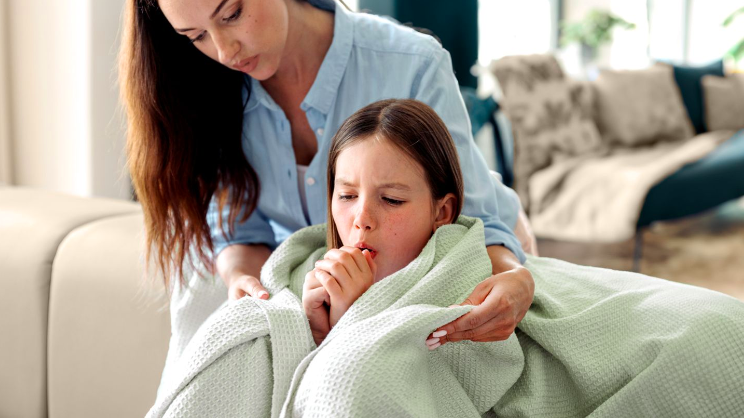
Health
The Power of Beans: Why This Superfood is a Nutritional Treasure
-

 Trending Stories1 year ago
Trending Stories1 year agoCDC: 1 in 4 Americans Still COVID-Free by End of 2022
-

 Health5 years ago
Health5 years agoMeghan Trainor Shares Motivational New Song ‘Blink’
-

 Health6 months ago
Health6 months agoHow Do Pawpaw Seeds Support Cardiovascular Health?
-

 Health2 years ago
Health2 years agoHow Long Does Monkey Pox Last Before It Surfaces in the Body?
-

 Health3 years ago
Health3 years agoWhat Causes Swollen Body? Understanding Edema and its Triggers
-

 Health3 years ago
Health3 years agoNutrition and the Importance of a Fitness Program – 3 Things to Know
-

 Health3 years ago
Health3 years ago5 Weird Reasons Why Pimples Disappear After Marriage
-

 Health2 years ago
Health2 years agoHealth Benefits Of Pawpaw Seed? 7 Things To Know

